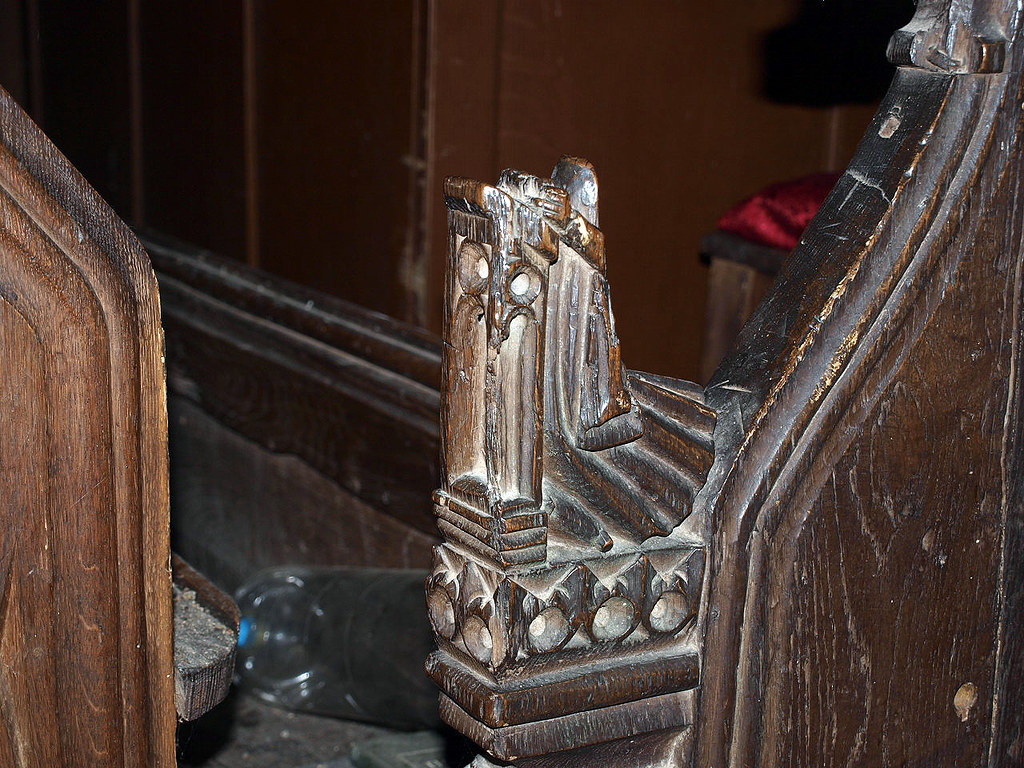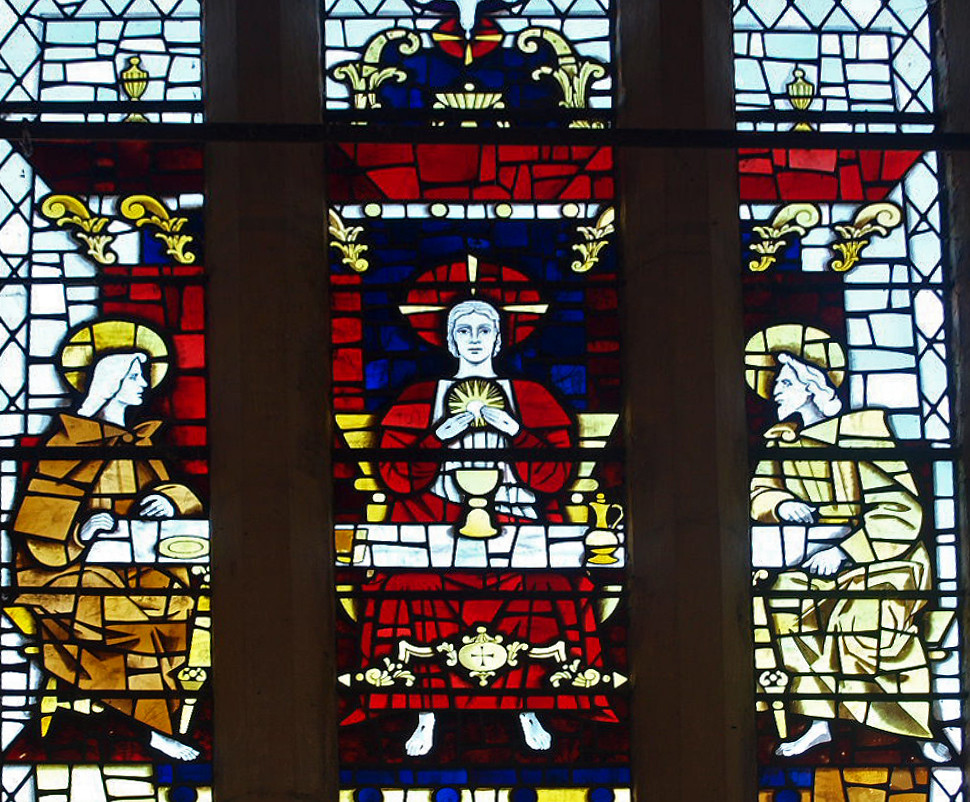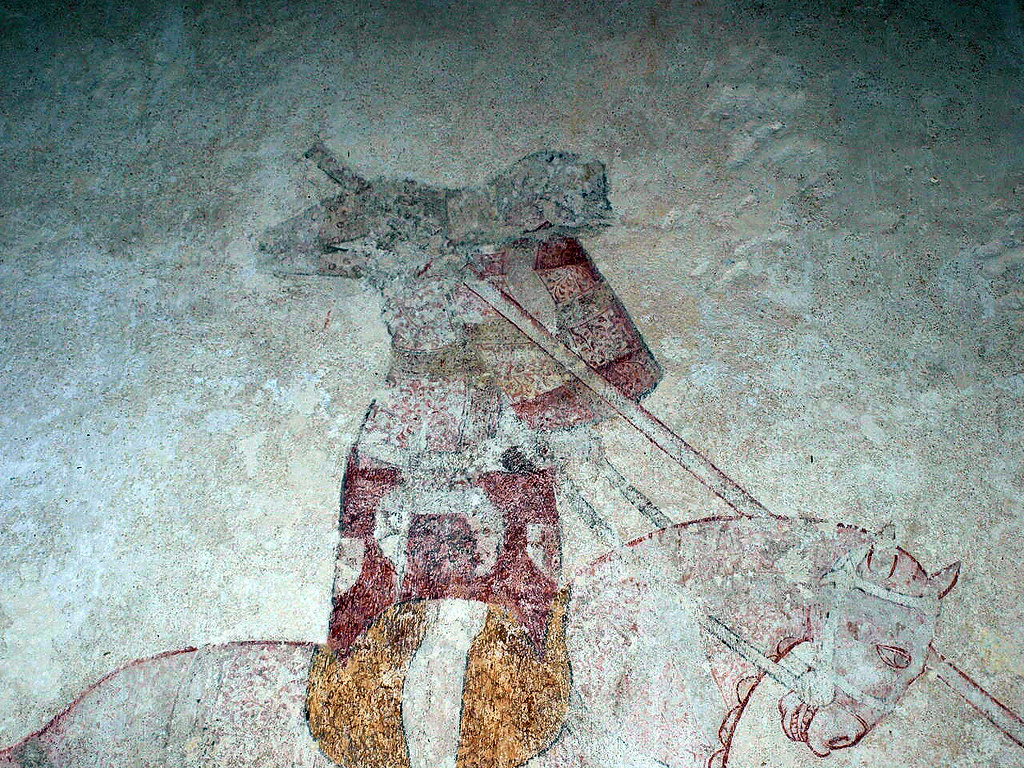ST MARY. E.E. chancel with lancet windows N and S (broad rere-arches inside) and an E window with three stepped lancet lights. W tower of c. 1300. Fine, steep tower arch. Dec nave, the two-light windows have in the tracery head the favourite figure of the four-petalled flower. The nave roof has scissor-bracing above as well as below the collar-beams. Perp S porch with flushwork panelling. Entrance with fleurons etc. Three niches above it. Battlements with initials. - PULPIT. Two decker, made up of various parts. The pulpit itself Jacobean, the reader’s desk with parts which may be Italian. - SCREEN Of one-light divisions, with ogee arches and tracery over.* - ROOD LOFT. The E front re-used behind the altar, a rare survival. - COMMUNION RAIL. Jacobean. - BENCHES. With poppy-heads and animals on the arms. - WALL PAINTINGS A large C15 St George, a large C15 St Christopher, a smaller St George of c. 1250, and a Martyrdom of St Edmund. Fragment of a Doom over the chancel arch. - STAINED GLASS. Canopies etc. in the N windows. - PLATE. Almsdish inscribed 1715; Set 1778.
* A will proved in 1459/60 leaves 6:. 8d. to the new making of the candle beam (ARA).
TROSTON. It has many things that make a village charming: timbered cottages in the shade of great trees, delightful gardens, an old barn, a quaint round house with flint walls, and an ancient church with a magnificent medieval porch. The door itself is ancient, its ironwork being 600 years old. The tower and the nave are 14th century and the chancel 13th. The nave has windows with fragments of old glass; the chancel has a double piscina and two rare rings once used for hanging the Lenten veil.
There is a 15th century screen, tall and richly carved; a 13th century font on a big round base; a modern pulpit with a reading desk beautifully carved, and a collection of old and new seats with poppyheads among them, a monkey and a dog and one or two odd beasts. The stairs to the roodloft have gone, but the doors are still here. On some of these walls medieval paintings can still be seen, though most of their glory has vanished. Over the chancel arch is part of a Doom picture, and elsewhere we see a quaint St Christopher with two fishes between his feet, a spirited St George with his horse leaping forward as he slays the dragon, and a scene of the martyrdom of St Edmund with two 13th century soldiers.
The village has two houses each with a memory in the realms of literature. One is the rectory among its fine trees, where Thomas Carlyle came to see an old pupil; the other is Troston Hall on the road to Ixworth, a charming Elizabethan house of red brick with two gables, twisted chimneys, and clipped yew hedges. It has some fine plaster ceilings, a richly carved frieze in the library, and its original hall and staircase. At the beginning of last century it was the home of Capell Lofft, one of the first patrons of Robert Bloomfield.
Edward Capell was one of the earliest commentators on Shakespeare and spent 20 years on a ten-volume edition of the plays. He is said to have transcribed the whole of Shakespeare ten times and he quarrelled with Garrick for speaking many speeches without understanding them. His nephew Capell Lofft inherited Troston Hall at his uncle’s death in 1781, and not only helped Robert Bloomfield but was one of the staunch supporters of Wilberforce in his fight against the Slave Trade.



No comments:
Post a Comment